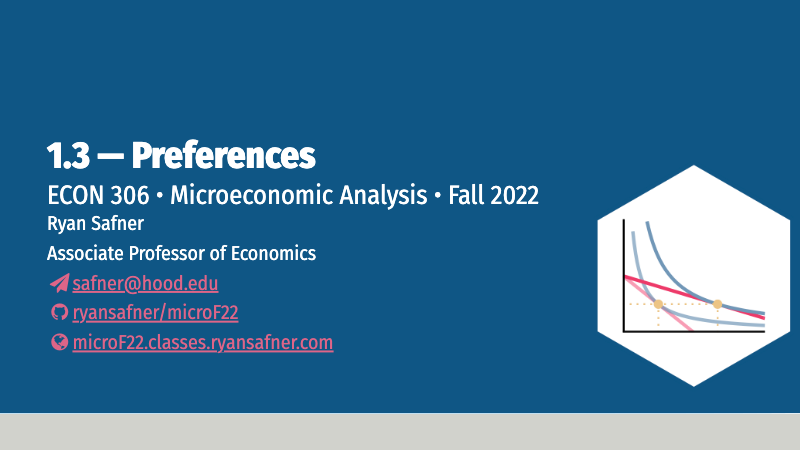1.4 — Utility Maximization — Class Content
Problem Set 1 (on classes 1.1-1.4) is due by 11:59 PM Friday September 16 on Blackboard Assignments.
Overview
Today we put all of our tools together thus far to solve the consumer’s constrained optimization problem. To solve the problem the “traditional way” would be to use Lagrangian multipliers and calculus and solve for the first order conditions. [Take the full Lagrangian equation and solve for all partial derivatives, set equal to 0.] We instead will find the solution by looking graphically, and use an algebraic rule that should make a lot of intuitive sense. That rule, equivalently expressed in two ways:
The first rule states that the slope of the indifference curve (left) equals the slope of the budget constraint (right). This is stating that the marginal benefit of consuming
The second (version of the) rule, solved for
Both forms are often called the equimarginal rule, that at the optimum choice, the marginal benefit equals the marginal cost (which is the marginal benefit of the next best foregone opportunity).
We will do some practice to make sure you can solve this type of model, and then you are fully prepared for Problem Set 1.
Readings
- Ch. 4.4-4.5 in Goolsbee, Levitt, and Syverson, 2019
- Math Review Guide
Practice
Today we will be working on practice problems. Answers will be posted later on that page.
Assignments
Appendix
See the online appendix for today’s content:
Slides
Below, you can find the slides in two formats. Clicking the image will bring you to the html version of the slides in a new tab. The lower button will allow you to download a PDF version of the slides.
You can type h to see a special list of viewing options, and type o for an outline view of all the slides.
I suggest printing the slides beforehand and using them to take additional notes in class (not everything is in the slides)!
